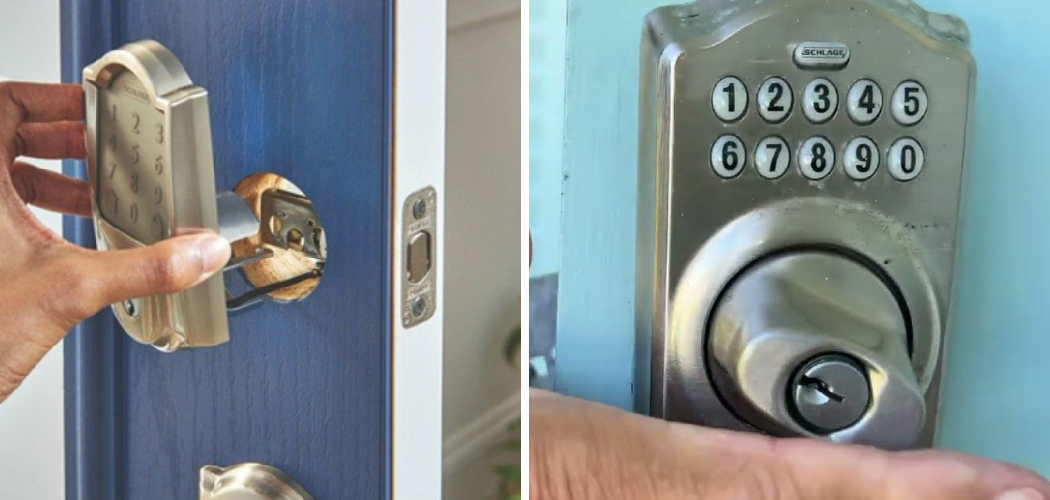Schlage deadbolts are renowned for their reliability and ease of use, making them popular for homeowners seeking enhanced security. The brand offers a variety of models, each designed to provide robust protection against unauthorized access while maintaining simplicity in operation. Securing your door with a high-quality deadbolt is an essential safeguard for your home, as it adds a critical layer of defense beyond standard locks.
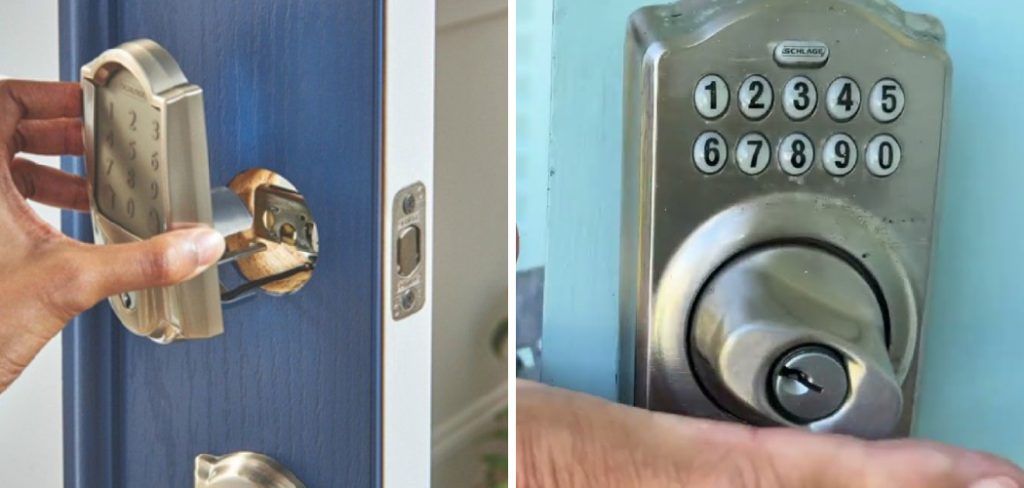
Understanding how to lock Schlage deadbolt correctly ensures the lock functions as intended and provides maximum security. This article serves as a comprehensive guide, detailing the step-by-step process of locking a Schlage deadbolt, offering insights for various models, and addressing common troubleshooting tips. Whether you’re new to these locks or looking to improve your understanding, this guide ensures you feel confident and secure in using Schlage deadbolts to protect your space.
Understanding Schlage Deadbolts
What is a Deadbolt?
A deadbolt is a high-security locking mechanism designed to protect against unauthorized entry. Unlike spring bolts found in standard doorknobs, a deadbolt relies on a solid metal bolt that extends directly into the door frame, making it far more resistant to forced entry. This durability and strength make deadbolts preferred for residential and commercial security.
Different Types of Schlage Deadbolts
Schlage offers a variety of deadbolt options to suit different needs and preferences:
- Single Cylinder Deadbolt: This is the most common type of deadbolt, featuring a key mechanism on the exterior side and a turn knob on the interior. It offers convenience and security, especially for residential use.
- Double Cylinder Deadbolt: Designed for enhanced security, this model requires a key to lock and unlock from both the exterior and interior sides. However, it can be less convenient in emergencies since no turn knob is available.
- Keyless and Smart Deadbolts: Incorporating modern technology, these deadbolts operate with keypad codes, smartphone apps, or even voice commands. They eliminate the need for physical keys and provide added convenience, making them a popular choice for tech-savvy users and those seeking security and ease of access.
These different models allow users to balance their security needs with lifestyle preferences.
Materials and Tools Needed
Basic Tools
- Key: Required for operation of single or double-cylinder models. Keeps the lock functional and secure.
- Finger or Palm: Used to turn the lock on single-cylinder models manually; quick and straightforward for everyday use.
- Smartphone or Keypad: Necessary for managing keyless or smart models. These tools allow for convenient locking and unlocking, often paired with apps or biometric systems.
Optional Tools for Maintenance
- Lubricant Spray: Ensures smooth operation by reducing friction within the mechanism over time. Essential for maintaining longevity and efficiency.
- Cleaning Cloth: Keeps the lock mechanism clean and free from dirt or debris, contributing to the lock’s reliability and appearance.
Having the right tools and materials is essential for properly functioning and maintaining your lock model, ensuring optimal security and convenience.
How to Lock Schlage Deadbolt: Locking a Schlage Single Cylinder Deadbolt
Step 1: Insert the Key (Exterior Side)
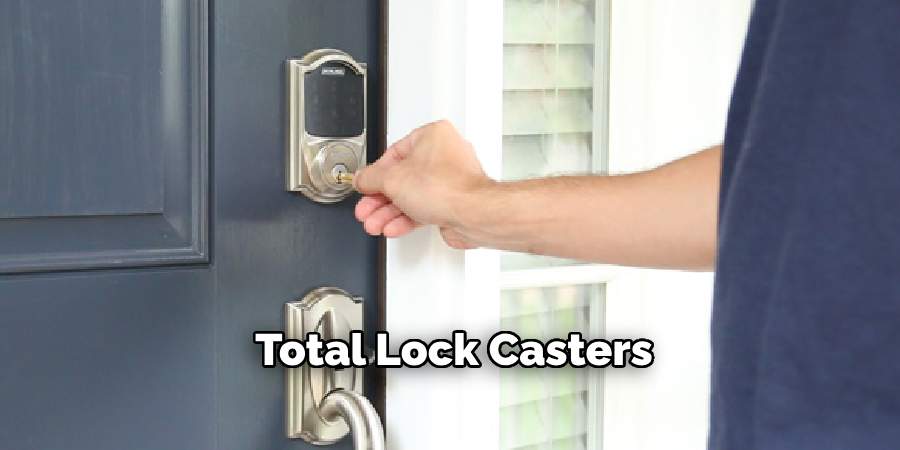
Insert the key into the keyhole on the exterior side of the door. Turn the key clockwise to extend the bolt into the door frame. This action securely locks the door, providing a first line of defense against unwanted entry. Ensure the key is fully inserted and rotated to its endpoint to engage the deadbolt mechanism properly.
Step 2: Engage the Deadbolt from the Inside
On the interior side, securing the lock is straightforward. Rotate the thumb turn to engage the deadbolt. This manual operation ensures the lock engages fully without needing a key. The thumb turn allows for a quick and easy way to lock the door, particularly when inside the property.
Step 3: Test the Lock
For added assurance, test the lock to confirm it is properly engaged. Attempt to turn the exterior doorknob or insert the key and rotate it to check that the bolt is fully extended and resistant to retraction without the correct key or thumb turn adjustment. This step ensures your door is securely locked and functioning as designed. Regularly testing the lock also helps identify any mechanical issues early, maintaining its reliability over time.
How to Lock Schlage Deadbolt: Locking a Schlage Double Cylinder Deadbolt
Step 1: Insert the Key on Both Sides
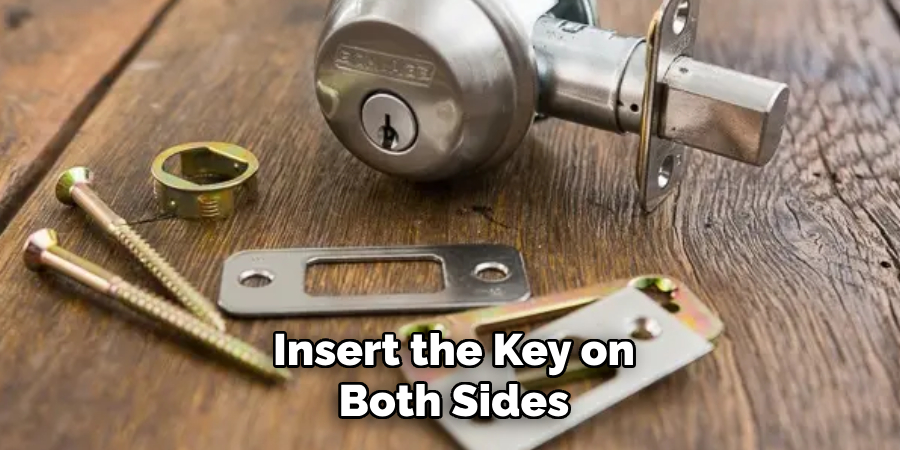
For a Schlage double-cylinder deadbolt, begin by inserting the key into the door’s interior and exterior keyholes. From the exterior side, turn the key clockwise to engage the deadbolt and extend the bolt into the doorframe. This action secures the door from the outside, creating a strong barrier.
Step 2: Locking from the Inside
After securing the exterior, use the key on the interior side of the door. Insert the key and turn it clockwise to lock the interior mechanism of the deadbolt. This ensures that both sides of the door are secured, preventing access from either direction without a key. This step is crucial for maintaining security in areas requiring controlled entry from both sides.
Step 3: Check Security
Test the lock’s security once both sides of the deadbolt are locked. Attempt to turn both interior and exterior knobs or handles to confirm the door cannot be opened. Ensure the key is fully engaged and the bolt is appropriately extended. Verifying that both sides are secure helps identify any potential malfunctions and ensures the lock functions as intended for reliable protection.
Locking a Schlage Keyless or Smart Deadbolt
Step 1: Use Your Code or App
For keyless deadbolts, enter your pre-set access code on the keypad. Ensure that the code is entered correctly to avoid errors. Open the compatible mobile app linked to your lock if you use a smart deadbolt. Select the option to lock the door from the app interface, ensuring the command is transmitted to the device.
Step 2: Confirm the Locking Mechanism
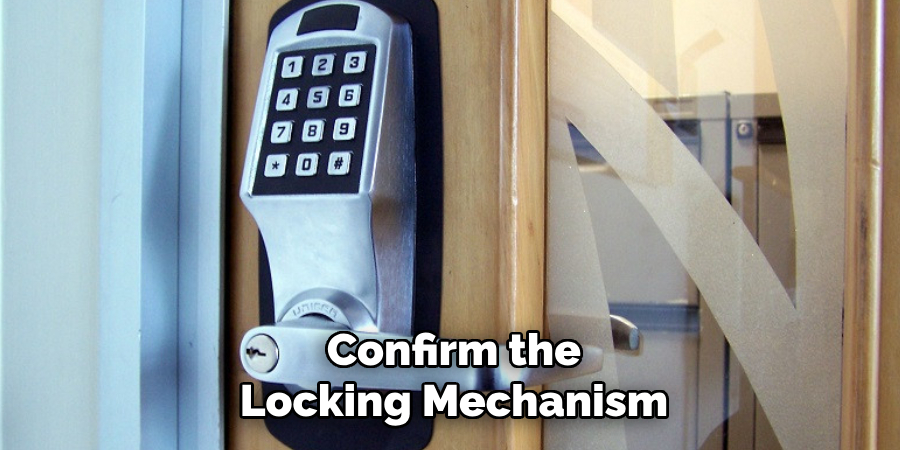
Verify that the process was successful after entering your code or using the app to lock the door. Listen for an audible sound, such as a beep or click, that indicates the locking mechanism has been engaged. Additionally, many smart locks feature an indicator light that will illuminate to confirm the lock is secured. Double-check that the deadbolt has fully extended into the door frame for optimum security.
Step 3: Manual Locking as a Backup
If, for any reason, the keyless or smart locking methods fail, a manual backup is available. From the interior side of the door, locate the thumb turn on the lock and twist it to engage the deadbolt fully. This traditional method ensures your door is secured even if the smart system or keypad malfunctions. Regularly testing the manual option is a good practice to ensure it remains functional.
Locking a Schlage keyless or smart deadbolt is a straightforward process that offers convenience while maintaining reliable security.
Troubleshooting Common Locking Issues
When dealing with a Schlage keyless or smart deadbolt, understanding common issues and their solutions can help maintain optimal performance.
Key Doesn’t Turn Smoothly
Apply a small amount of lock lubricant to the keyhole to reduce friction. Additionally, inspect the key for any damage or bending, as a warped key can impede smooth operation.
Lock is Sticking or Jammed
Check if the door is properly aligned with the frame, as misalignment can cause the deadbolt to resist movement. If the issue persists, try re-seating the deadbolt with gentle but firm force or apply lubricant to the bolt mechanism to ease stiffness.
Smart Lock Not Responding
First, confirm the batteries are not dead and replace them if needed. Ensure the companion app, Wi-Fi, or Bluetooth connection is functioning correctly. Rebooting the app or resetting the lock’s connection might resolve the issue.
Keypad Not Accepting Code
If the keypad fails to accept your input, clean it to remove dirt or debris that may interfere with functionality. Reset the access code according to the manufacturer’s guidelines and confirm it is entered correctly.
Regular maintenance and timely troubleshooting can resolve most issues, ensuring your lock remains secure and reliable.
Maintaining Your Schlage Deadbolt
Proper maintenance of your Schlage deadbolt is essential to ensure long-term functionality and security. Following these simple steps can help you keep your lock in optimal condition:
Regular Cleaning
Wipe the lock’s exterior with a soft, non-abrasive cloth to remove dust and dirt that may accumulate on the surface. If you have a keypad or smart lock, clean the keypad gently with a damp cloth to eliminate grime or residue that could impact its responsiveness.
Lubrication for Smooth Operation
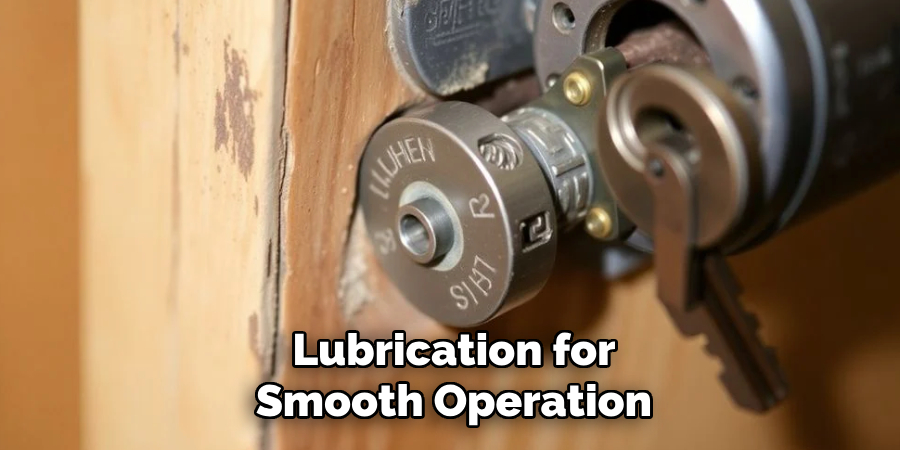
To ensure smooth operation of the locking mechanism, apply a small amount of lubricant, such as graphite or a lock-specific lubricant, to the keyhole and thumb turn. Avoid using oil-based lubricants, as they can attract dirt and gum up the mechanism over time.
Battery Replacement (for Smart Locks)
For smart locks, replace the batteries regularly or when the low-battery indicator appears. Always use high-quality, name-brand batteries to maximize the lock’s performance and battery life. Using substandard batteries may lead to inconsistent operation or a shortened lock lifespan.
By incorporating these maintenance practices into your routine, your Schlage deadbolt will remain reliable, secure, and functional for years to come.
Conclusion
Understanding how to lock schlage deadbolt, whether it’s a traditional key-based model or a keyless smart version, is essential for maintaining the security of your home. Regular maintenance, such as cleaning the lock and replacing batteries for smart models, ensures smooth operation and long-term reliability. Always double-check that the deadbolt is fully engaged before leaving your home, and periodically test the lock for added peace of mind. By following these steps and incorporating proper care into your routine, you can trust your Schlage deadbolt to provide the security and functionality you need.

